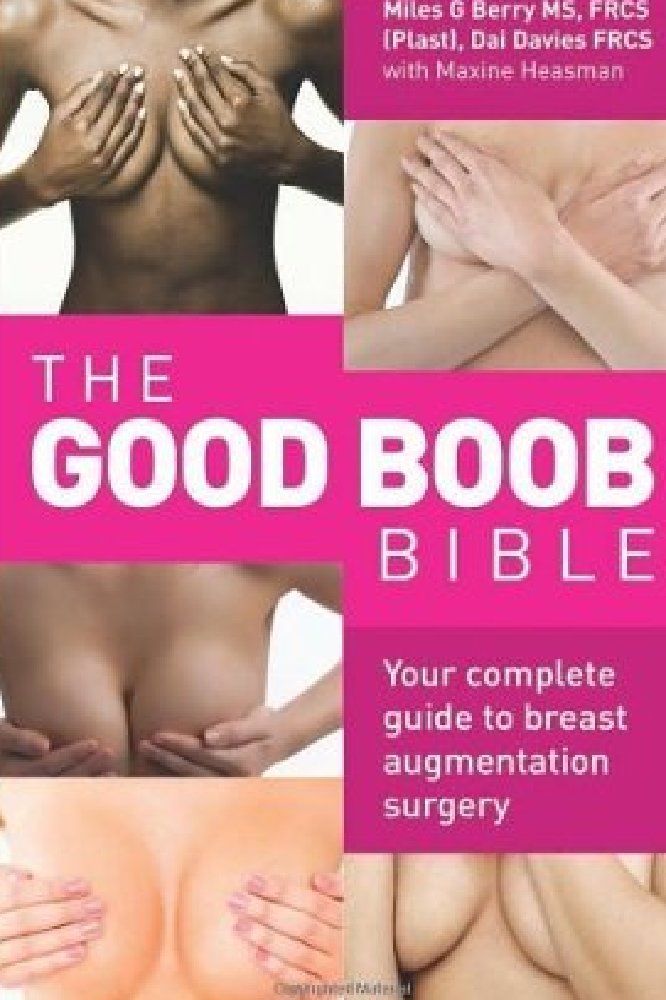
The Good Boob Bible
The Good Boob Bible is the culmination of nearly 4 years of work aimed at providing women with all they need to know about cosmetic surgery’s most commonly performed procedure. As the introduction tries to encourage, the more one knows about the process, the better choices one can make. We are trying to give women the power to move away from the ‘production-line’ BA that the commercial companies have been providing over the last 10-15 years.
Why is breast augmentation one of the most common procedures in Britain?
That’s an interesting question, and no doubt the close and strong connection with femininity, self-esteem and confidence is key. It is important to appreciate that most patients we see are seeking help not simply to have ‘big breasts’ but to repair or restore something, usually the droop and volume loss resulting from pregnancy and breast-feeding. There is also an underappreciated incidence of asymmetry (mismatch) that causes great consternation and difficulty with buying and wearing clothes. Finally, there are anomalies, including tuberose breasts, that nature seemed to miss a beat with.
What advances have there been in breast implant and surgical techniques to make this procedure more reliable?
Chapter 8 summarises the development of silicone prostheses, which have undergone continual improvements over the last 50 years, chiefly concerning the filler gel consistency, texture and durability of the outer shell. This has several layers, one in particular (fluorinated) helps to minimise the leakage of filler silicone – known as ‘gel bleed’ – outside the shell. Surgical techniques have become more gentle and tissue-friendly, but one of the key evolutions has been the concept of ‘biodimensional’ or ‘tissue-based planning’. This seeks to carefully evaluate the particular breast, which may differ from the patient’s other side, and match it as closely as possible to an implant that not only comes close to what expectation the woman has, but that inflicts minimal damage to the native breast and lasts as long as possible. This is almost the diametric opposite of simply stuffing a breast with the largest possible implant à la Jordan.
What are the lifelong consequences if this surgery goes wrong?
Scars are ‘lifelong’ so one needs to know how to optimally conceal and produce them. Loss of sensation, if nerves divided, will be permanent. I have seen the occasional patient that has had too many operations where blood supply is a problem, leading to death of part of the skin or the nipple-areola complex. Fortunately, this is rare.
Miles, please tell us about your medical background.
Medical school followed by general medical training. For the last 21 years it has been purely surgical, firstly as a general surgeon, then a reconstructive surgeon. Since 2007 it has been cosmetic-focussed and my career has allowed me the indulgence of travel and living in 2 other countries for extended periods (Sydney and Paris) where I have gained super-specialist skills. I also enjoy teaching (Lecturer at Barts for 2 years), research (50 research articles published and a patent in breast cancer management) and patient education, hence the book.
When did you first know that you wanted to be plastic surgeons?
I wanted to be a surgeon long before I left school and was deviated from my initial career path of orthopaedic surgery (great kit) by the Professor of Plastic Surgery at UCL who filled a defect with some skin harvested from somewhere else on the body. One of the simplest reconstructive techniques (skin graft), but the concept that tissue could be moved around the body blew me away.
What is the most common complaint when women come to see you for breast augmentations?
Usual cause, as mentioned above, is loss of what they once had eg. pregnancy, but also extreme lack of development and asymmetry.
Please tell us about the requirement of a consultation with someone who wants surgery.
I would refer to Chapter 5. I am a firm believer in a proper consultation and always offer a 2nd obligation- and cost-free. Quite how some can get away with 10 minutes is entirely beyond me, but I guess that’s more the ‘bottom line’ than optimal results.
What is the aftercare required for breast surgery?
The main ones are observing the post-op instructions, which are usually the result of many hundreds of cases and are constantly refined by the best surgeons. Another would be massage of the scars and later protection against the harmful effects of gravity due to the weight of the implant so good-quality supportive bras for exercise.
What is next for you?
Continue my artistic development through collaboration with a portrait artist friend of mine: our last project explored the link between art and aesthetic surgery through a well-received exhibition and book. Perhaps I will have time to work on a similar patient-orientated book for facial surgery, but I am presently a little surprised to be enjoying my time spent with our daughter who arrived late last year.

